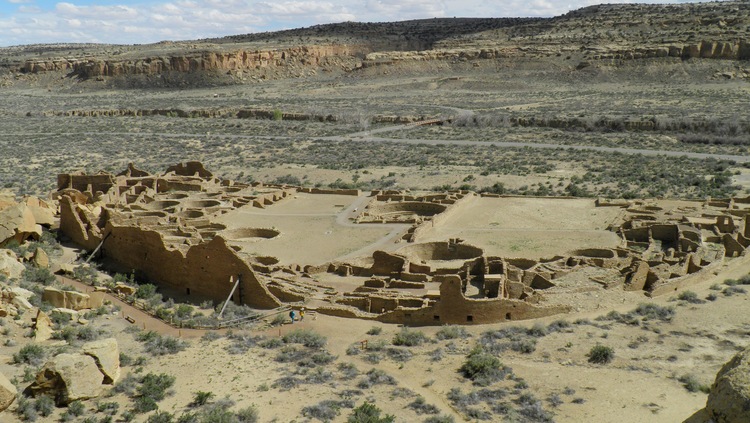Greater Chaco contains a rich and diverse collection of cultural resources, including monumental structures (called “great houses”), sacred sites and ceremonial places. Many of these fall within Chaco Culture National Historical Park, but there are thousands more cultural sites within the broader landscape. This landscape also contains a vast network of ancient roads, linking Chaco Canyon to outlying settlements, shrines and other sites. These resources have immense present-day value to many pueblos and tribes in the Southwest, and their significance to the world at-large has also been recognized. Greater Chaco is just one of twenty-two World Heritage Sites in the entire country.

Constructed over decades, even centuries, between 800 and 1200 A.D., Chaco’s great houses were often several stories high with hundreds of rooms, and were built out of quarried stone and logs transported from distant mountain ranges and forests. On canyon walls, paintings and petroglyphs illustrate astronomical phenomena and solar events witnessed by ancestors of the modern-day pueblos, and other carvings mark and symbolize traditional ceremonies of the Navajo. And in the landscape surrounding the canyon, the ancient roads – built by hand and still visible in some places – extend for hundreds of miles in every direction.
Today, thousands of people come to Chaco Canyon ever year to admire its cultural wonders. Tribal members also return – to visit sacred sites and pay homage to their ancestors – while archaeologists continue to study and learn about Greater Chaco and the people who built the great houses and traveled the ancient roads.